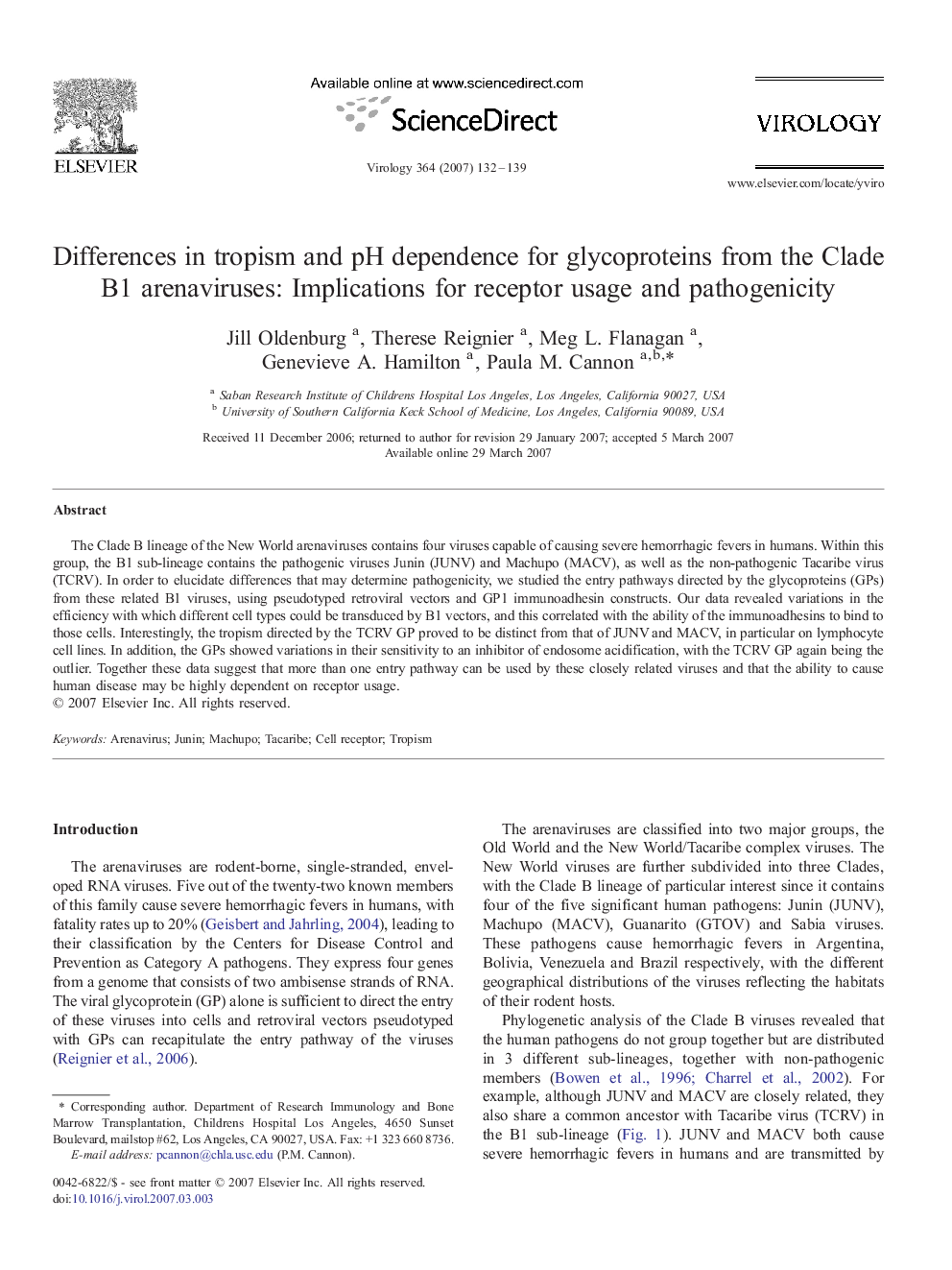| Article ID | Journal | Published Year | Pages | File Type |
|---|---|---|---|---|
| 3427286 | Virology | 2007 | 8 Pages |
The Clade B lineage of the New World arenaviruses contains four viruses capable of causing severe hemorrhagic fevers in humans. Within this group, the B1 sub-lineage contains the pathogenic viruses Junin (JUNV) and Machupo (MACV), as well as the non-pathogenic Tacaribe virus (TCRV). In order to elucidate differences that may determine pathogenicity, we studied the entry pathways directed by the glycoproteins (GPs) from these related B1 viruses, using pseudotyped retroviral vectors and GP1 immunoadhesin constructs. Our data revealed variations in the efficiency with which different cell types could be transduced by B1 vectors, and this correlated with the ability of the immunoadhesins to bind to those cells. Interestingly, the tropism directed by the TCRV GP proved to be distinct from that of JUNV and MACV, in particular on lymphocyte cell lines. In addition, the GPs showed variations in their sensitivity to an inhibitor of endosome acidification, with the TCRV GP again being the outlier. Together these data suggest that more than one entry pathway can be used by these closely related viruses and that the ability to cause human disease may be highly dependent on receptor usage.
